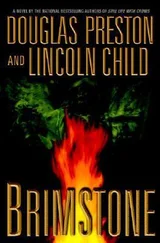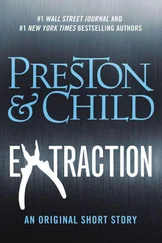Douglas Preston - Mount Dragon
Здесь есть возможность читать онлайн «Douglas Preston - Mount Dragon» весь текст электронной книги совершенно бесплатно (целиком полную версию без сокращений). В некоторых случаях можно слушать аудио, скачать через торрент в формате fb2 и присутствует краткое содержание. Город: New York, Год выпуска: 1996, ISBN: 1996, Издательство: A Tor Book; Published by Tom Doherty Associates, Inc., Жанр: Триллер, на английском языке. Описание произведения, (предисловие) а так же отзывы посетителей доступны на портале библиотеки ЛибКат.
- Название:Mount Dragon
- Автор:
- Издательство:A Tor Book; Published by Tom Doherty Associates, Inc.
- Жанр:
- Год:1996
- Город:New York
- ISBN:0-812-56437-5
- Рейтинг книги:3 / 5. Голосов: 1
-
Избранное:Добавить в избранное
- Отзывы:
-
Ваша оценка:
- 60
- 1
- 2
- 3
- 4
- 5
Mount Dragon: краткое содержание, описание и аннотация
Предлагаем к чтению аннотацию, описание, краткое содержание или предисловие (зависит от того, что написал сам автор книги «Mount Dragon»). Если вы не нашли необходимую информацию о книге — напишите в комментариях, мы постараемся отыскать её.
Mount Dragon — читать онлайн бесплатно полную книгу (весь текст) целиком
Ниже представлен текст книги, разбитый по страницам. Система сохранения места последней прочитанной страницы, позволяет с удобством читать онлайн бесплатно книгу «Mount Dragon», без необходимости каждый раз заново искать на чём Вы остановились. Поставьте закладку, и сможете в любой момент перейти на страницу, на которой закончили чтение.
Интервал:
Закладка:
Another slide appeared.
“This is a magnification of the first slide, digitally enhanced, glint-suppressed, and compensated for spectral drift. If you look closely along the dirt street in front of the church, you will see a blurry image resembling a log. That is a human corpse, as any Pentagon photo-jock could tell you. Now here is the same scene, six months later.”
Everything appeared to be the same, except that the log now looked white.
“The corpse is now skeletonized. When the military examined large numbers of these enhanced images, they found countless such skeletons lying unburied in the streets and the fields. At first, they were mystified. Theories of mass insanity, another Jonestown, were advanced. Because—”
A new slide appeared.
“—as you can see, everything else is still alive. Horses are still grazing in the fields. And there in the upper left-hand corner is a pack of dogs, apparently feral. This next slide shows cattle. The only dead things are human beings. Yet whatever it was that killed them was so dangerous, so instantaneous, or so widespread, that they remain where they fell, unburied.”
He paused.
“The question is, what was it ?”
The hall was silent.
“Lowell Cafeteria cooking?” someone ventured.
Levine joined in the general laughter. Then he nodded, and another aerial slide appeared, showing an extensive complex, gutted and ruined.
“Would that it were, my friend. In time, the CIA learned that the cause was a pathogen of some sort, created in the laboratory pictured here. You can see from the craters that the site has been bombed.
“Exact details were not known outside Russia until earlier this week, when a disenchanted Russian colonel defected to Switzerland, bringing with him a fat parcel of Soviet Army files. The same contact who provided me with these images alerted me to this colonel’s presence in Switzerland. I was the first to examine his files. The events I am about to relate to you have never before been made public.
“What you must understand first is that this was a primitive experiment. There was little thought to political, economic, even military use. Remember, ten years ago the Russians were lagging behind in genetic research and struggling to catch up. In the secret facility outside Novo-Druzhina, they were experimenting with viral engineering. They were using a common virus, herpes simplex Ia+, the virus that produces cold sores. It’s a relatively simple virus, well understood, easy to work with. They began meddling with its genetic makeup, inserting human genes into its viral DNA.
“We still don’t know quite how they did it. But suddenly they had a horrific new pathogen on their hands, a scourge they were ill equipped to deal with. All they knew at the time was that it seemed unusually long-lived, and that it infected through aerosol contact.
“On May 23, 1985, there was a small safety breach at the Soviet laboratory. Apparently, a worker inside the transfection lab fell, damaging his biocontainment suit. As you know from Chernobyl, Soviet safety standards can be execrable. The worker told nobody about the incident, and later went home to his family in the worker’s complex.
“For three weeks the virus incubated in his peritoneum, duplicating and spreading. On June 14, this worker felt ill and went to bed with a high fever. Within a few hours, he was complaining of a strange pressure in his gut. He passed a large amount of foul-smelling gas. Growing nervous, his wife sent for the doctor.
“Before the doctor could arrive, however, the man had—you will excuse the graphic description—voided most of his intestines out through his anus. They had suppurated inside his body, becoming pastelike. He had literally defecated his insides out. Needless to say, by the time the doctor arrived, the man was dead.”
Levine paused again, looking around the room as if for raised hands. There were none.
“Since this incident has remained a secret from the scientific community, the virus has no official name, it is known only as Strain 232. We now know that a person exposed to it becomes contagious four days after exposure, although it takes several weeks for symptoms to appear. The mortality rate of Strain 232 is close to a hundred percent. By the time the worker had died, he had exposed dozens, if not hundreds, of people. We could call him vector zero. Within seventy-two hours of his death, dozens of people were complaining of the same gastrointestinal pressure, and soon suffered the same gruesome fate.
“The only thing that prevented a worldwide pandemic was the location of the outbreak. In 1985, movement in and out of Restricted Area Fourteen was highly controlled. Nevertheless, as word spread, a general panic ensued. People in the area began loading their belongings into cars, trucks, even horsecarts. Many tried fleeing on bicycle, or even on foot, abandoning everything in their desperation to get away.
“From the papers the colonel brought with him out of Russia, we can piece together the response of the Soviet Army. A special team in biohazard suits set up a series of roadblocks, preventing anyone from leaving the affected area. This was relatively easy, since Area Fourteen was already fenced and checkpointed. As the epidemic roared through the neighboring villages, whole families died in the streets, in the fields, in the market squares. By the time a person felt the first alarming symptoms, a painful death was only three hours away. The panic was so great that at the checkpoints, the soldiers were ordered to shoot and kill anyone— anyone— as soon as they came within range. Old men, children, pregnant women were gunned down. Air-dropped antipersonnel mines were scattered in wide swaths across woods and fields. What these measures didn’t catch, the razor wire and tank traps did.
“Then the laboratory was carpet-bombed. Not, of course, to destroy the virus—bombs would have no effect on it. But rather to obliterate the traces, to hide what really happened from the West.
“Within eight weeks, every human being within the quarantined area was dead. The villages were deserted, the pigs and dogs gorging on corpses, the cows wandering unmilked, a horrible stench hanging over the deserted buildings.”
Levine took a sip of water, then resumed.
“This is a shocking story, the biological equivalent of a nuclear holocaust. But I’m afraid the last chapter has yet to be written. Towns that have been irradiated with atomic bombs can be shunned. But the legacy of Novo-Druzhina is harder to avoid. Viruses are opportunistic, and they don’t like to stay put. Although all the human hosts are dead, there is a possibility that Strain 232 lives on somewhere in this devastated area. Viruses sometimes find secondary reservoirs where they wait, patiently, for the next opportunity to infect. Strain 232 might be extinct. Or a viable pocket of it may still be there. Tomorrow, some hapless rabbit with muddy paws might wriggle through a hole in the perimeter fence. A farmer might shoot that rabbit and take it to market. And then the world as we know it could very well end.”
He paused.
“And that ,” he shouted suddenly, “ is the promise of genetic engineering !”
He stopped, letting the silence grow in the hall. Finally he dabbed his brow and spoke again, more quietly. “We won’t be needing the projector anymore.”
The projector image disappeared, leaving the hall in darkness.
“My friends,” Levine continued, “we have reached a critical turning point in our stewardship of this planet, and we’re so blind we can’t even see it. We’ve walked the earth for five thousand centuries. But in the last fifty years, we’ve learned enough to really hurt ourselves. First with nuclear weapons, and now—infinitely more dangerously—with the reengineering of nature.”
Читать дальшеИнтервал:
Закладка:
Похожие книги на «Mount Dragon»
Представляем Вашему вниманию похожие книги на «Mount Dragon» списком для выбора. Мы отобрали схожую по названию и смыслу литературу в надежде предоставить читателям больше вариантов отыскать новые, интересные, ещё непрочитанные произведения.
Обсуждение, отзывы о книге «Mount Dragon» и просто собственные мнения читателей. Оставьте ваши комментарии, напишите, что Вы думаете о произведении, его смысле или главных героях. Укажите что конкретно понравилось, а что нет, и почему Вы так считаете.












